Treadmill Decks and Belts Explained
Shopping for a home treadmill can be a real challenge without knowledge, hence our Five Step Treadmill Buying Guide and other researched articles on the topic. But let’s face it, not everyone has the vocabulary necessary to ask good questions when it comes to treadmill decks and belts. You do however know a wobbly unit when you step on it. But even the most informative treadmill brochure is useless without a basic understanding of what you’re buying. And there are big differences between these units in terms of construction, hence the pricing swings from $800 and $8,000.
Knowing the facts about treadmill motors, how to assemble and place a treadmill, and yes, the decks and belts really should be among the first steps in making this investment. Once you have the key terms and concepts down, then maintenance issues like belt lubrication, alignment, and replacement make a lot more sense. But frankly, the more you know up front, the less likely you are to have problems down the road, and the longer your treadmill will last.
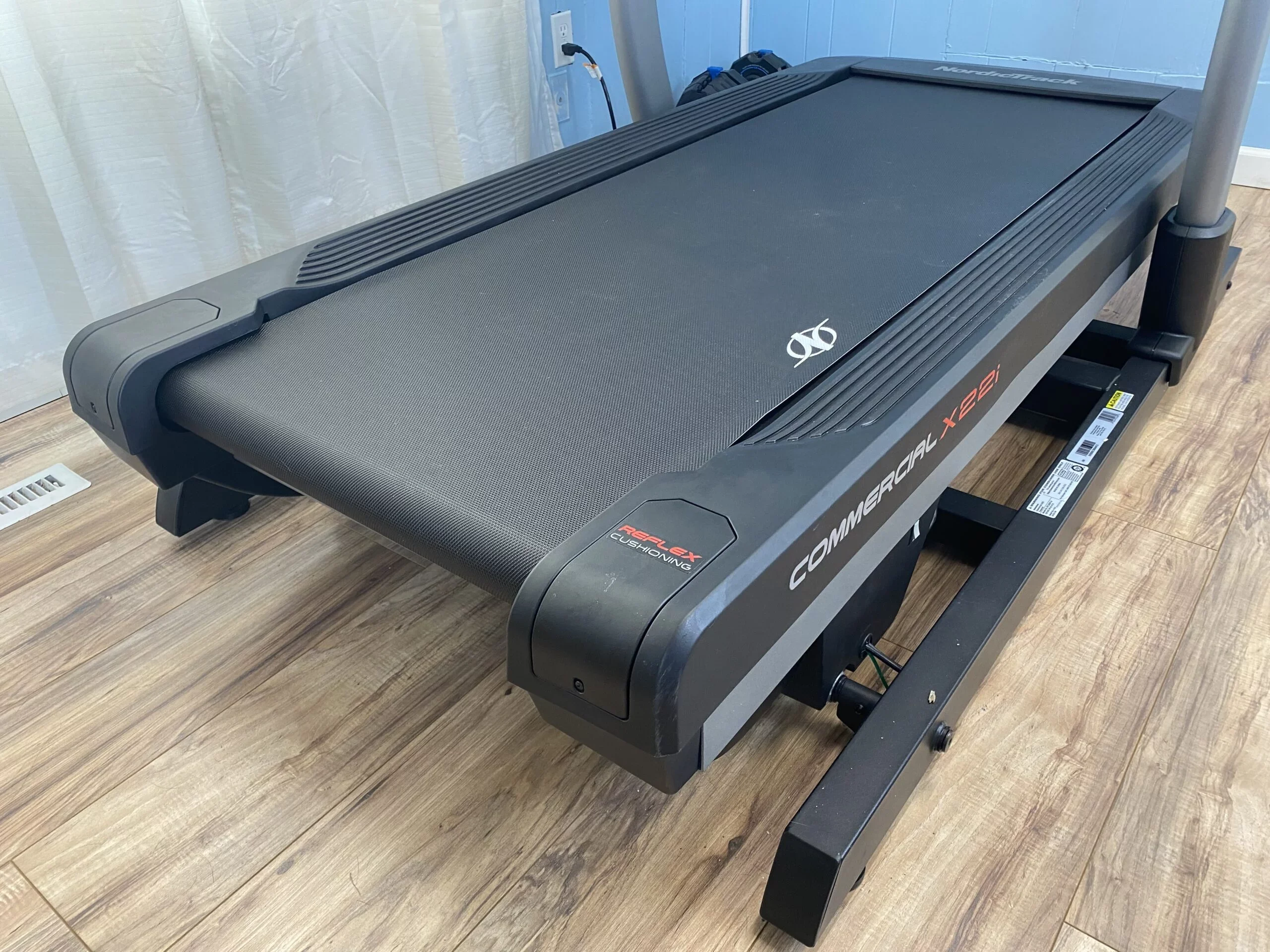
The NordicTrack X22i running deck measures 22”W x 60”L, allowing plenty of space for tall/fast runners.
What Is A Treadmill Deck?
The deck and belt are arguably the most important components of a treadmill. Simply put, the deck is the running surface of the treadmill. That’s the long walking surface upon which the belt runs by way of rollers. If you’ve ever seen one a desk treadmill like of a LifeSpan TR1200, you’ll see that’s really what you’re buying next to the motor.
Most treadmill manufacturing sites don’t go into detail about their deck, but they do provide information about the belts and rollers. If shopping online it would be worth the time to ask the manufacturer’s customer service department what type of material is used in a particular unit.
Materials
- Medium Density Fiberboard (MDF): MDF is a material made from sawdust fibers, wax, and resins The recycled fibers are mixed with the resin and glue and compacted. You’ve probably seen countertops with this material in homes. If you’re shopping online for a treadmill, chances are really good it has an MDF deck. Typical thickness is ¾” to 1”.
- Solid Wood: Pretty rare but still around, some treadmill decks are made from a solid sheet of wood usually ¾” to 1” in thickness. One of the big downsides here is lack of consistency and smoothness. One sheet of solid wood like this is hard to find. If not solid wood, another option in these types is particle board. Particle board is compressed wood chips, as opposed to wood fibers and is typically weaker than MDF.
- Metal: Some treadmills use a solid metal deck. These tend to present the opposite problem as opposed to the particle board in they’re too hard.
- Coating: Just like a wooden or metal deck at your house, treadmill decks require a coating to prevent warping. Depending on the unit, the deck may be single, duo-, or triple-coated with a phenolic resin which is the same material used on billiard balls and resembles a wax. The term “single coating” means only one side of the deck receives this, while duo-means both sides, and some receive a triple coating with an additional layer on top. Coating the deck with this phenolic resin not only prevents warping but also reduces friction while the belt is running across it.
Why Does This Matter?
You get what you pay for in life, but it’s also important to determine what you need. When it comes to treadmill decks, the big questions involve planned frequency of use and the bodyweight of the users. Studies demonstrate that the ground reactionary force (GRF) produced while running is 2 to 3 times the body weight, this means anywhere from 300 to 450 pounds for a 150-pound runner, and 400 to 600 pounds for a 200-pound athlete. If you’re up in the 300-pound club, your GRF could be close to half a ton.
While most of these studies, such as this in PLOS One, are focusing on the physical damage sustained by the runners themselves, consider the hit on the treadmill’s deck and belt. Using a step counter while jogging you’ll see a 30-minute jog at 6 miles per hour can generate as many as 4,500 steps. Done four times a week, that translates to 18,000, or 936,000 per year. Having the right deck certainly makes a big difference, whether you’re planning on walking once or twice a week, or training daily for a marathon.
Most of the treadmills you’ll see designed for home use utilize an MDF deck. There are other options of course, but given its durability and weight it hits a certain Goldilocks Spot for most home users. Lighter and easier on the joints than metal, but much more durable and smooth than particle board or wood, it’s the most often recommended of the types.
Deck Thickness, Construction, and Durability
Deck thickness is also a consideration. Consider the Landice L8 has a full 1″ thick reversible deck and a user weight maximum of 500 lbs, versus the Horizon T101, which has a 0.7″ thick deck and user weight maximum of 300 lbs. The Landice L8 runs about $6,299 versus the Horizon T101 at $649. There are other differences between the two models of course, but right off the bat you understand the difference in structure, durability, and cost.
Another difference between decks on the market is that of frame attachment. Treadmill decks can either be bolted or welded onto a frame. Bolted decks have bolts at the front, rear, and along the sides. This is the most common method as it’s less expensive and makes for easier assembly. So long as the deck is MDF, it’s not a problem, but be wary of those decks made of particle board which are bolted. This would be especially true of reversible decks. You can image a sheet of less durable particle board being pounded upon down the middle, while bolts affix it to metal along the sides. The lifespan of that deck just wouldn’t be as long as one can imagine walking on ice. Welded decks bring a lot more durability, tend to be heavier, and do cost more.
So when considering purchasing a new treadmill, one good way to gauge overall deck quality is to check the warranty. The better treadmills on the market offer a lifetime guarantee on the deck, whereas many cheaper models may offer a one-year pledge. Just how frequently you’ll use the machine, and perhaps how many other members of the family will, are two questions you should consider for yourself. Otherwise you could wind up with a bowed or bent treadmill deck.
Precor happens to be one manufacturer who specializes in making reversible decks, like on the TRM 445, which they argue doubles the life expectancy. This group also offers solid warranties on their products meaning they don’t expect to need to replace the parts often. That said, Precor treadmills are pricier than the norm. If you’re a true Do-It-Yourselfer, the answer is yes, you can build your own deck out of wood to replace one in a treadmill, but that’s clearly not for everyone. Much better to simply ask in advance and get the right model.
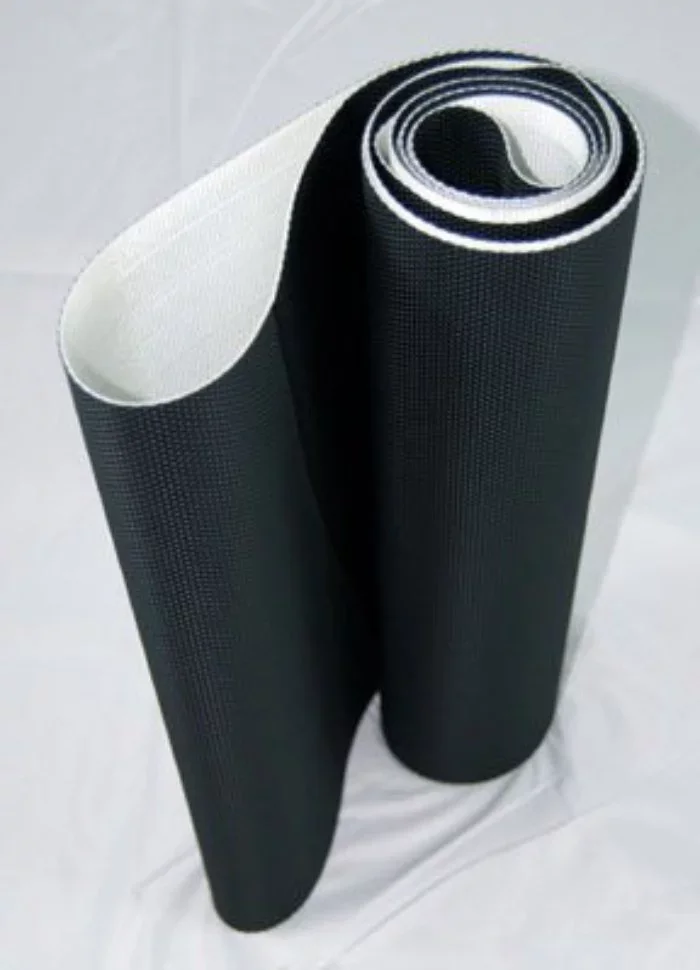
A 2-ply belt has a separate undercoating to help it slide across the deck.
How Do Treadmill Belts Work?
And of course, without a belt, there’s not much point in standing on the deck. This is one of the easiest points to determine when shopping for a home treadmill. Belts are referenced in sales literature as the “tread,” “running surface,” or sometimes just “belt.” These will range anywhere from 13” to 22” in width, and between 40” and 65” in length. The length of the belt is ultimately what determines the size of the frame and deck required.
Most treadmill belts you’ll see advertised online use a PVC top coating and either a monofilament or poly-blend for backing. Depending on the style, they might have a cotton component as well to absorb the noise. Poly-blend belts tend to be less noisy and have lower friction, but monofilament belts, while noisier, have a longer lifespan.
Something to consider, noise isn’t always bad. If the belt is too tight, yes it’ll run silently, but as it makes more contact with the deck it’ll wear out faster. If you’re getting a lot of noise, make sure to check the deck for smoothness and see if the belt is fastened correctly.
That said, some of the commercial treadmills you’ll find in large gyms have a urethane top coat to their belts. This prevents wear marks and is designed for heavier usage.
Belt Types
When shopping for treadmills you’ll undoubtedly see these terms
- Single Ply: The belt is one solid piece of material.
- 2-Ply: The upper side of the belt is rubber or PVC, and the underside is cotton, polyester, urethane, or mono-filament.
- 4-Ply or 3-Ply: Additional layers of the above materials can be added for extra coating.
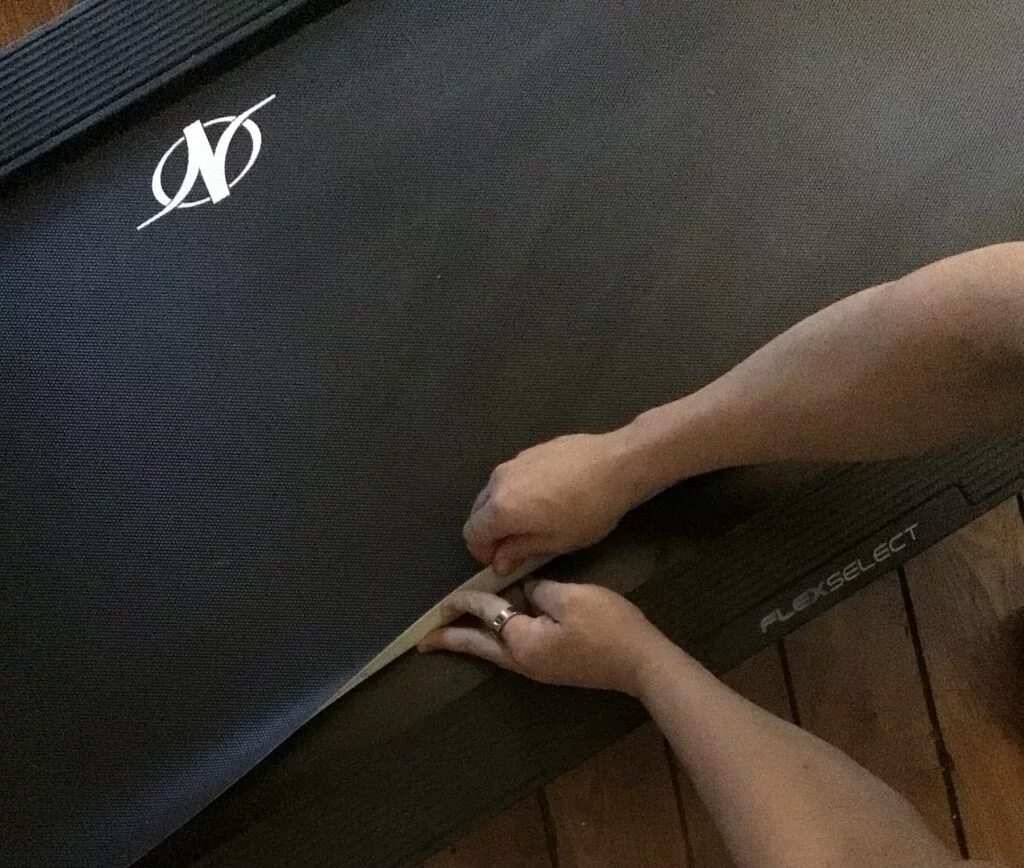
A 2-ply treadmill belt will have an second layer underneath the top to make for smooth running.
Why Does This Matter?
The type of material used for the belt makes a good bit of difference when considering longevity. Across the board, the 2-ply belt is considered the best deal. Having the underside protected by cotton or some other type of material makes for a quieter and smoother ride. Most decks, remember, have a phenolic resin applied and are a smooth MDF, so this much better than a 1-ply belt with just rubber. But before you think the third or even fourth layer are better, remember the extra weight they bring. Extra weight on the belt means more heat and work required of the motor. Belts with three or four layers will typically require lubrication more frequently.
Also, consider the length of the belt when thinking of materials. A shorter machine, like a walking unit or a desk model, might not need as much thickness, but any treadmill with a 60” long belt used for running would.
Just like any piece of equipment, belts need to be maintained. The most frequent complaints about home exercise equipment often come down to a lack of maintenance. Belts need to be lubricated with a frequency which depends on usage. Each treadmill is a little different, so check the user manual. Most brands these days come with a couple containers of lube which is right for that unit. You’ll also want to check the belt tension and alignment as needed, and occasionally you’ll have to replace one.
What Do Treadmill Rollers Do?
You really can’t discuss the deck and belt without mentioning rollers. These are the cylinders which are affixed at either end of the deck and roll the belt front to back. Rollers come in sizes ranging from 1.5” to 3.5” in diameter and as a rule, the heavier the more durable. Smaller rollers mean smaller bearings and are harder to keep balanced. If something goes wrong with the rollers, nothing the motor does will let that belt move. Also, heavier rollers produce more grip on the belt and produce more inertia as it rolls, meaning the motor has less work to do.
These cylinders also keep the belt centered on the deck. As you’re running there’s bound to be wiggle and tilt and perhaps even a loosening of the belt As a general rule, you’ll see rollers which measure 1.6″ tend to run hot and wear down under a lot of pressure. Rollers over 2.5″ provide much more stability and are more the norm.
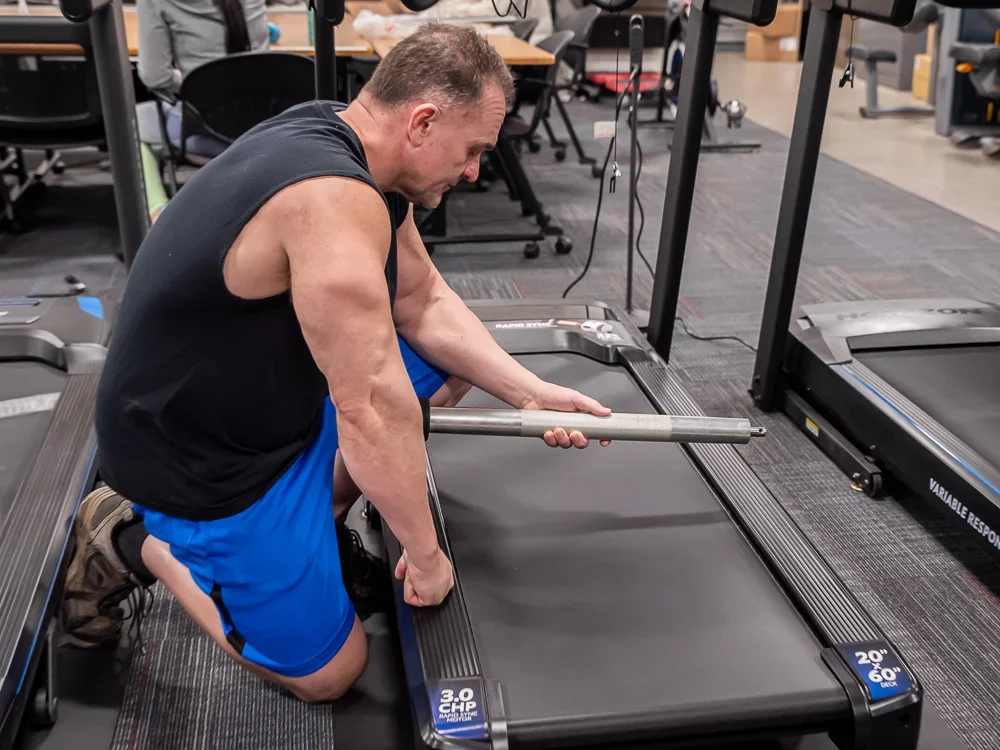
The Horizon 7.0 AT sports tapered rollers 60mm/46mm, or roughly 2.5″ by 1.8″. Photo by: Oleksandr Kosheliev / TreadmilReviews.net
Cushioning Systems And Shock Absorbers
Cushioning systems vary widely in treadmill decks. Cheaper treadmill decks may not offer any at all. Back in the old days, a treadmill deck was simply metal welded to metal. But indeed the times are changing, and with good reason. Studies continue to demonstrate the benefit. Consider the relatively recent article “Effects of Treadmill Cushion and Running Speed on Plantar Force and Metabolic Energy Consumption in Running” published in Gait & Posture, which reports runners significantly reduce peak plantar force on a cushioned treadmill as opposed to one without it. With the advancements made in artificial intelligence (AI), many of the better treadmills on the market now have smart sensors which help adjust the cushioning to the individual runner’s pace.
Mechanically though, the concept is much like a car’s shock absorbers.
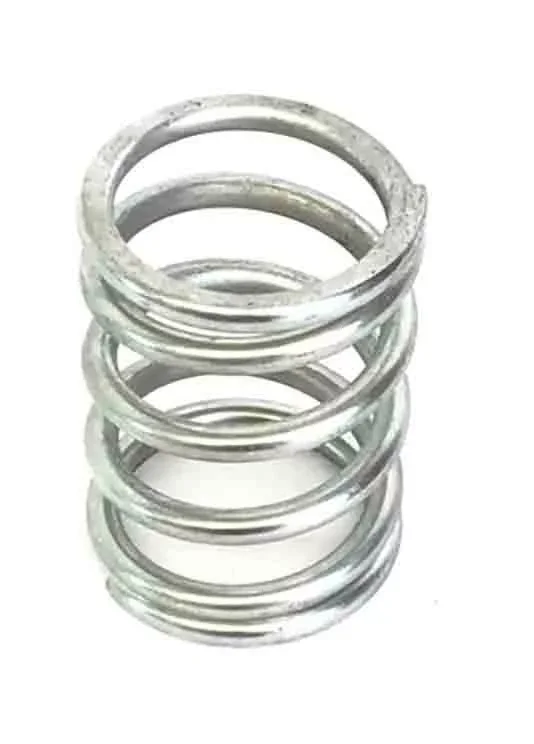
Above is an example of a NordicTrack spring for shock absorber.
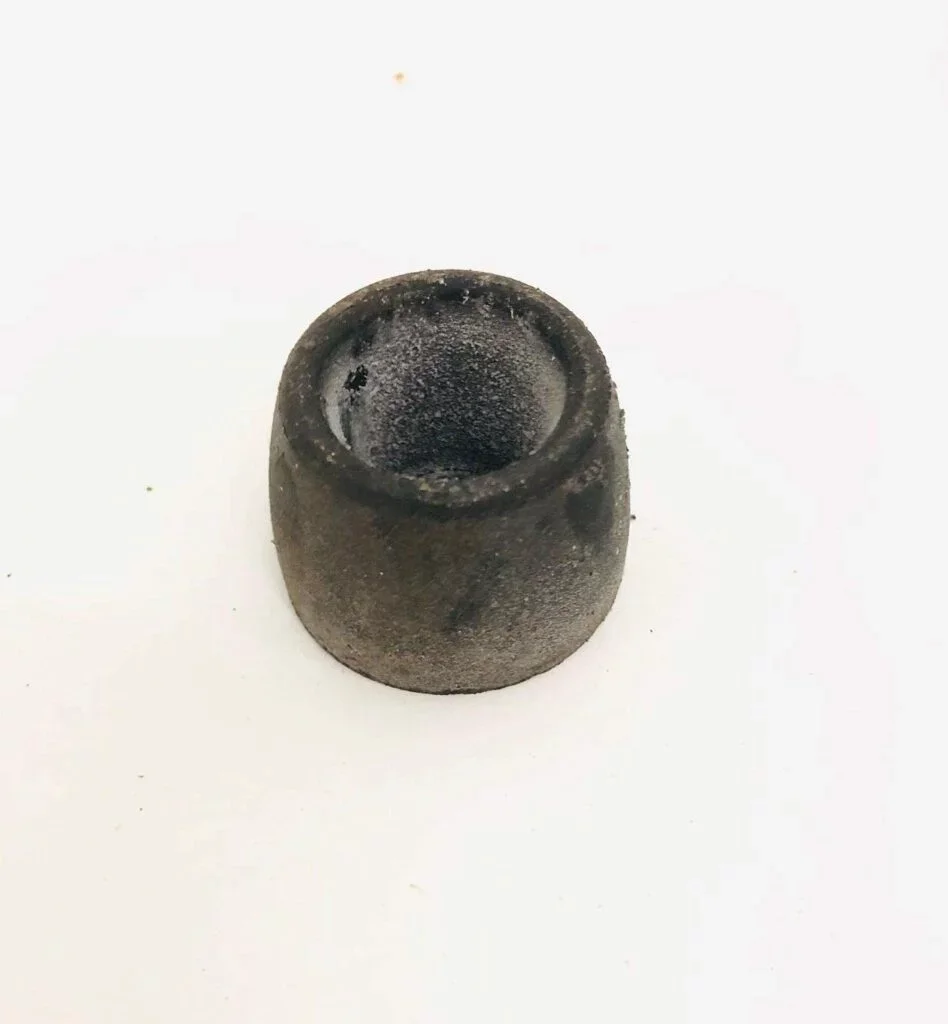
Above is an example of a Precor shock absorber.
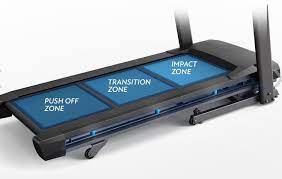
Horizon treadmills incorporate a unique 3-zone cushioning system.
Researching the individual cushioning system on individual models isn’t that difficult. Most brands promote their style right along with the deck size and style. But if a unit has no cushioning or shock absorption, then consider it’s probably best for light walking, not hard running. This is going to be especially true with treadmill decks built to incline and decline. The force applied to running up a 15% will be significantly greater than walking on the level, and without a good shock absorber, this won’t bode well for your belt or deck.
Shop Smart
Whether preparing to spend $800 or $8,000, there’s no reason to buy a machine you don’t understand. As an added resource, check into our Five Step Treadmill Buying Guide which provides answers to questions you might not have known to ask. One of the first questions to answer in your own mind is for what purpose will this treadmill be used. Once you know that, you’ll be well on the way to knowing what kind of deck and belt you’ll be needing.
Frequently Asked Questions
Where can I look for information about treadmill decks and belts before I purchase?
The manufacturer's website is a good tool. Typically the user's manual is available online. Belt size is almost always marketed up front, but you might have to call customer service to ask about the deck construction.
Are less expensive treadmills more cheaply made?
Not necessarily, but you will see a big difference in the details like single ply belts versus 2-ply, as well as warranty duration on the deck.
How long will a treadmill deck last?
That largely depends on the usage and care taken. Frequent lubrication and careful running are keys to longer term ownership.
Other Treadmill Reviews:
- Test HomePage
- NordicTrack Commercial X14i
- Echelon Stride
- NordicTrack C 590 Pro
- Sole TD80 Treadmill Desk
- NordicTrack Commercial X11i
- NordicTrack T 8.5 S - Pros & Cons (2024)
- Horizon Elite T5
- Exerpeutic TF1000
- NordicTrack T 6.5 S - Pros & Cons (2024)
- ProForm Sport 5.0
- ProForm Premier 900
- ProForm ZT6
- NordicTrack FreeStride Trainer FS5i (Discontinued)
- Bowflex Max Trainer M5
- BowFlex TreadClimber TC100
- ProForm Power 795
- ProForm Sport 7.0
- NordicTrack Incline Trainer X15i
- LifeSpan TR3000e Electric Folding
- NordicTrack C 1650 Treadmill
- Horizon Elite T9
- Official Boston Marathon Treadmill 4.0
- NordicTrack Treadmill Desk
- NordicTrack C 1630 Pro
- NordicTrack C 970 PRO
- Bowflex TC20 TreadClimber
